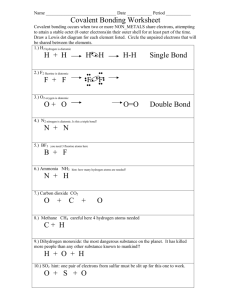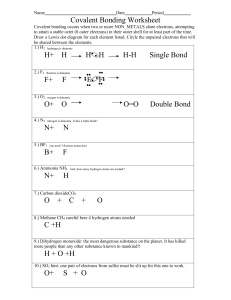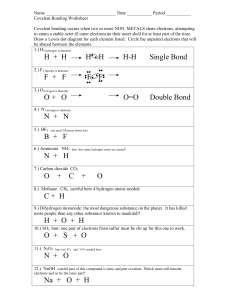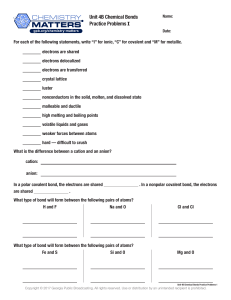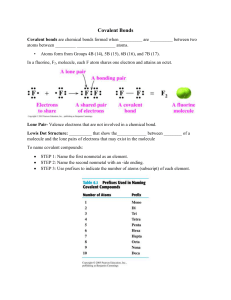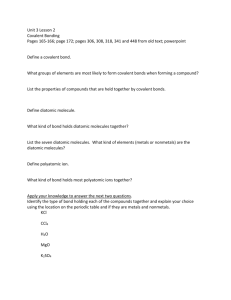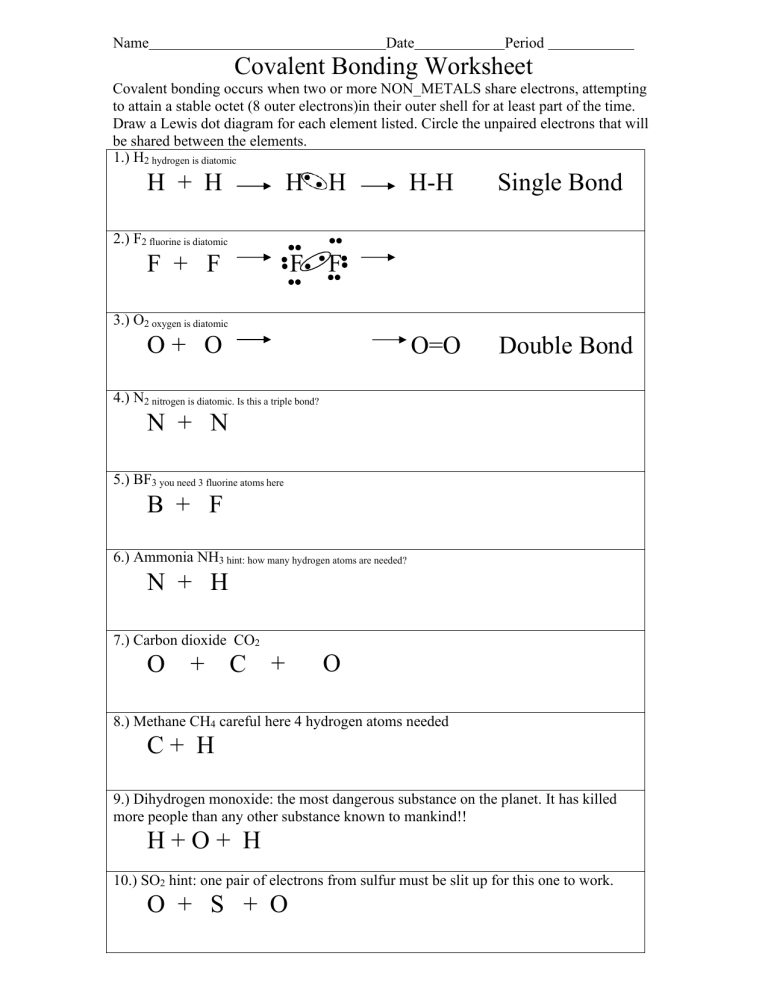
Name Date Period Covalent Bonding Worksheet Covalent bonding occurs when two or more NON_METALS share electrons, attempting to attain a stable octet (8 outer electrons)in their outer shell for at least part of the time. Draw a Lewis dot diagram for each element listed. Circle the unpaired electrons that will be shared between the elements. 1.) H2 hydrogen is diatomic H + H H H H-H Single Bond O=O Double Bond 2.) F2 fluorine is diatomic F + F F F 3.) O2 oxygen is diatomic O+ O 4.) N2 nitrogen is diatomic. Is this a triple bond? N + N 5.) BF3 you need 3 fluorine atoms here B + F 6.) Ammonia NH3 hint: how many hydrogen atoms are needed? N + H 7.) Carbon dioxide CO2 O + C + O 8.) Methane CH4 careful here 4 hydrogen atoms needed C+ H 9.) Dihydrogen monoxide: the most dangerous substance on the planet. It has killed more people than any other substance known to mankind!! H+O+ H 10.) SO2 hint: one pair of electrons from sulfur must be slit up for this one to work. O + S + O Types of Chemical Bonds Classify the following compounds as ionic (a metal + a nonmetal or a compound containing a polyatomic ion) or covalent (a nonmetal + a nonmetal) Write the number of each atom in each compound. Type of Bond 1.) CaCl2 15.) C2H5OH 2.) CO2 3.) H2O List each atom and how many are in the compound. Follow the example below. 4.) Sr3(PO4)2 Ca = 1 5.) K2O 6.) NaF 7.) Al2(CO3)3 8.) CH4 9.) SO3 10.) LiBr 11.) Mg3(PO4)2 12.) (NH4)2HPO4 13.) C12H22O11 14.) H2O Cl = 2
